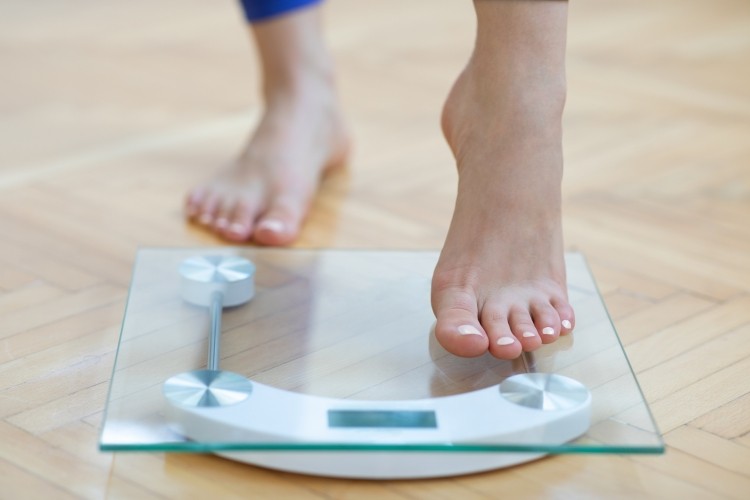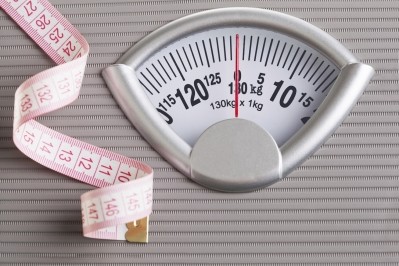Momentum builds for probiotics for weight management

The global weight management supplements market was valued at nearly $5.7 billion in 2021 and expected to grow with a CAGR of 2.0% by 2026 (Euromonitor International). The category is traditionally dominated by ingredients that may promote satiety or that increase metabolic rates (thermogenesis)
However, a link between the gut microbiota and obesity was first reported in 2006 by Jeffrey Gordon and his group at Washington University in St. Louis, who found that microbial populations in the gut are different between obese and lean people, and that when the obese people lost weight their microflora reverted back to that observed in a lean person. This suggested that obesity has a microbial component (Nature, Vol. 444, pp. 1022-1023, 1027-1031).
A 2013 paper in Science (Vol. 341, Issue 6150), also led by Prof Gordon, found that transplanting gut bacteria from obese humans into germ-free mice leads to greater weight gain and fat accumulation than mice that were given bacteria from the guts of lean humans.
The findings showed that weight and fat gain is influenced by communities of microbes in the gut and their effect on the physical and metabolic traits of the host, leading to metabolic changes in the rodents that are associated with obesity in humans.
This has led many research groups to explore if probiotics may help manage weight. A probiotic is defined as a “live microorganisms which when administered in adequate amounts confer a health benefit on the host” – FAO/WHO.
Animal data
There are many examples of probiotic strains with potential weight management efficacy that are supported by data from animal studies.
For example, Korean researchers have reported that a combination of Limosilactobacillus fermentum MG4231 and MG4244 may reduce weight gain in lab mice consuming a high-fat (Western) diet by almost 30%. Data published in Beneficial Microbes (doi: 10.3920/BM2020.0205) also indicated that the strains were associated with lower levels of fat in liver and adipose tissue.
Also from Korea, scientists from Duksung Women’s University and Mediogen Co., Ltd, have report that mice fed a high fat diet and supplemented with Weissella cibaria MG5285 for eight weeks experienced significant improvements in a range of health measures, including benefits for body weight and liver health. (Food & Nutrition Research, doi: 10.29219/fnr.v65.8087).
Recently, a study from China reported that the potential anti-obesity effects of Bifidobacterium animalis subsp. lactis BB-12 (Chr. Hansen) may occur via two distinct pathways: Adding BB-12 to a high fat diet prevented the transition from a healthy microbiome to an obese microbiome. Subsequently. BB-12 promoted the growth of beneficial bacteria and decreased the growth of harmful bacteria in the guts of lab animals (Frontiers in Nutrition, doi: 10.3389/fnut.2021.811619).
Translating the animal data to humans
While the data from animal studies for some strains are compelling, it is always important to test such efficacy in well-designed human studies.
An interesting study from scientists at APC Microbiome Ireland showed that the benefits of some strains do not directly translate from lab animals to humans. Writing in EBioMedicine, the scientists reported that the effects of Bifidobacterium longum APC1472 only partially translated to men and women.
The data showed that the strain may improve blood sugar levels in healthy overweight/obese adults but, unlike the animal data, no significant impact was observed for body mass index (BMI) or waist-to-hip (W/H) ratio.
Human data
There may be only partial translation of benefits for some strains, but others do produce notable benefits for weight management in humans.
For example, ADM’s Bifidobacterium animalis subsp. lactis BPL1 (CECT 8145) strain is supported by data from a three-month randomized, parallel, double-blind, placebo-controlled trial. The trial, published in the International Journal of Obesity, found that supplementation with either live or heat-killed (postbiotic) BPL1 led to significant reductions in waist circumference (-1.75 cm in the live and -1.84 cm heat-killed groups) and the live bacterium produced statistically significant reductions in BMI versus both its baseline levels and the placebo group.
The live (probiotic) form of BPL1 is used in Culturelle’s Metabolism + Weight Management product launched in the US and Canada last year.
Japan’s Morinaga Milk Industry Co., Ltd also have a weight management strain: Bifidobacterium breve B-3. Data from a 12 week clinical trial with pre-obese adults found that the strain may slash body fat mass and percent body fat of 0.6 kg and 0.7%, respectively (Bioscience of Microbiota, Food and Health, doi: 10.12938/bmfh.18-001).
IFF’s Bifidobacterium animalis ssp. lactis 420 (Howaru Shape) in combination with Litesse Ultra prebiotic fiber has been reported to reduce body fat by 4.5%, trunk fat by 6.7%, and waist circumference by one inch (2.6 cm), versus placebo (EBioMedicine, doi: 10.1016/j.ebiom.2016.10.036).
Healthy weight management is also an area of high interest to Chr. Hansen. In addition to the potential benefits of BB-12, data from human clinical studies shows that the company’s Lactobacillus gasseri BNR17 strain may contribute to maintenance of a healthy weight, a healthy body mass index and support healthy levels of abdominal fat (Jung et al. Korean J Fam Med 2013, Kim et al. J Med Food 2018).
Lallemand Health Solutions also offers a probiotic for weight management: The company announced last year that it has filed a patent regarding data from a randomized, double-blind, placebo-controlled trial involving 152 overweight participants using Lacticaseibacillus rhamnosus HA-114 for weight management.
Also noteworthy, Austrian start-up Slimbiotics is exploring the potential of a combination of Lactobacillus strains originally isolated from African fermented food Kimere. The company’s strain combination includes Lactobacillus plantarum K4-Lb6, L. fermentum K2-Lb6, L. fermentum K7-Lb1, L. fermentum K8-Lb1, L. fermentum K1-Lb1, and L. fermentum K11-Lb3
Next gen solutions
Moving beyond the established Lactobacillus and Bifidobacterium species and strains, a number of academic groups and companies are looking for next generation strains and digging into the strains already present in the gut that are linked to obesity. Importantly, most of these bacteria have never been cultured.
A team of researchers from the Catholic University of Louvain isolated a novel bacterium from the human gut called Dysosmobacter welbionis J115T. The strain is found in up to 70% of the healthy population, and lower abundance is correlated to higher BMI, fasting glucose levels, and higher HbA1c (glycated hemoglobin, a marker of long-term presence of excess glucose in the blood) in obese people.
The team, led by Prof Patrice Cani, first reported the discovery of D. welbionis J115T in 2020 in a paper in the International Journal of Systematic and Evolutionary Microbiology, and followed that up with a paper in the journal Gut in 2021 that found that daily administration of live D. welbionis J115T could blunt the high-fat diet induced metabolic disorders in lab mice. The strain appeared to be acting on both white and brown adipose tissue metabolism.
Hafnia
Another novel strain that is attracting attention is Hafnia alvei HA4597, a strain being explored and developed commercially by French start-up TargEDys SA.
As we reported last year, H. alvei HA4597 may promote satiety by producing the caseinolytic protease B (ClpB) protein, which has been reported to mimic the appetite-reducing alpha-melanocyte-stimulating hormone (alpha-MSH).
These effects were supported by findings from a 12-week supplementation trial in overweight adults, with the probiotic found to significantly increase the proportion of overweight subjects losing at least 3% and even 4% of baseline body weight while following a hypocaloric diet over 12 weeks. Such weight loss levels were described as clinically relevant by the researchers.
















